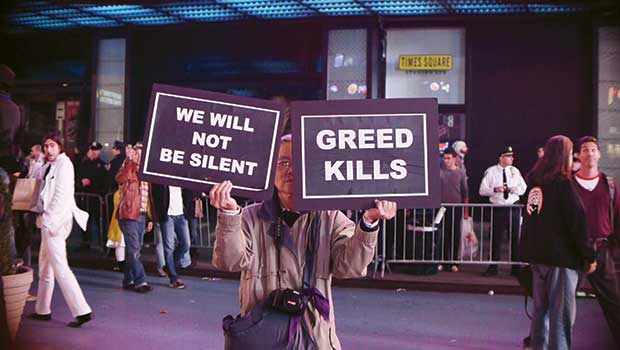Films highlight America’s history of resistance
'List Projects: Civil Disobedience' screens at MIT through Oct. 29


Author: Courtesy Ja’Tovia GaryA scene from Ja’Tovia Gary’s “An Ecstatic Experience” (still), 2016.

Author: Courtesy of the Video Data Bank, www.vdb.orgA scene from Jem Cohen’s “Birth of a Nation” (still), 2017.
On the Web
For the full program schedule, visit: https://listart.mit.edu/exhibitions/list-projects-civil-disobedience
The MIT List Visual Arts Center will be screening its “List Projects: Civil Disobedience” through Oct. 29. As advertised, the exhibit presents “a program of documentaries, news footage, citizen journalism and artist’s films featuring moments of political resistance and public demonstration from the 20th century through today.”
MIT has been the scene of many protests, especially since the 2016 election. This compilation of films and clips reflects on the importance of artists in those movements as they challenge and confront the abuse of power and social injustice.
Throughout the course of each day, “List Projects: Civil Disobedience” progresses through a series of film clips. They are shown in chronological order, from the hunger march of 1931 to the Yemeni Bodega Strike in New York City that occurred in response to President Trump’s immigration restrictions. The program’s purpose isn’t just to expound on the flaws of the current administration, but to show how ingrained protesting and civil disobedience are in our nation’s history. The U.S. was built on resistance.
Many of the clips are non-professional, which provides a cultural window into both the filmmakers and the time period. One 23-minute clip from 1969 is an interview with Fred Hampton, leader of the Illinois chapter of the Black Panther Party. The film is eerily prescient as Hampton is asked questions about putting his own safety at risk, just a short time before his assassination.
Videofreex, a collective organized around the use of portable consumer video equipment to produce independent media, put the interview together. The camera work is shoddy, zooming in too close to Hampton’s face, sometimes falling off the subject all together, occasionally idly panning across the other members, who never speak. But the result is a sense of presence. The absence of professional camera setup and trained journalists makes the tape feel more authentic. We are there in the room with Hampton, sitting on the couch, smoking. We are there in the group of contemporaries asking him how it feels to know he might die at any minute.
Because the program runs all day, every visitor experiences a different historical snippet. All art is open to interpretation, but the program is designed to reach every viewer in a different way. The clips chronicle all manner of civil disobedience, protests, marches, formal documentaries, dances and art making. They champion African Americans, gay rights, women’s rights and the basic ability of workers to be able to provide for their families.
Additional programming supplements the exhibit, including documentary film screenings every Thursday night and three participatory meditative and art-making workshops with artist Kate Gilbert, beginning Aug. 18.







